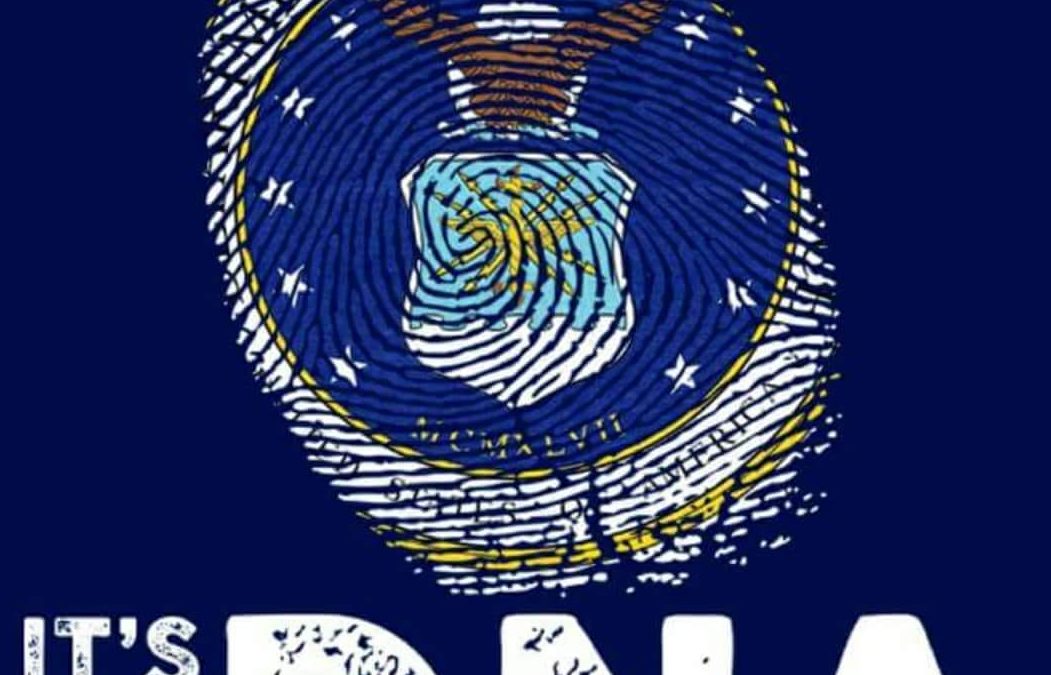The 558th Training squadron of the USAF Air Education and Training command at Randolph AFB in San Antonio touches some full circle life experiences for me.
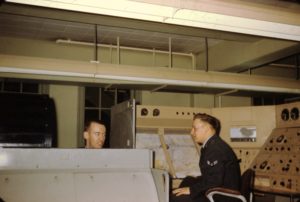
Airman First Class Frank Hoch in front of the Link trainer panel with all those bells and whistles.

That’s Dad – the same rank I was below – briefing a pilot on the link trainer.
When I was born in the early 60s my father was a maintenance technician for Air Force simulators and some of my earliest memories are of sitting in one of those sims as a toddler posing for pictures on family day. I couldn’t have been more than three or four but all those bells and buttons and shiny lights flickering on and off told me my daddy was cool and smart and cutting edge long before I needed to understand why.
Less than 20 years later I was upside down in trainer cockpits teaching electricians how to fix those buttons and light switches with the intervening years of air shows and flight line access making me utterly comfortable in those spaces.
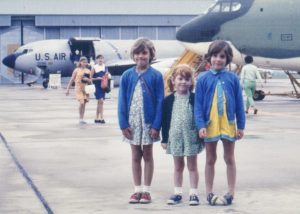
That’s me on the left at an unknown airshow – there were SO many!
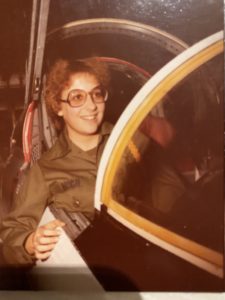
Actually posing in a trainer cockpit for a graduation pic from Aircraft Electrical School
For another 15 years I was in and out, still on bases but on the fringes learning more about the tech changes from family and friends. But for the last 20 we’ve been out of the loop. So, an offer from one of those old friends, still an insider, to tour the Remote Piloted Aircraft (RPA) training center was a no-brainer.
And wow has technology changed! To be sure, it still takes electricity and bells and buttons and lights. But it also involves massive screens and a mouse and sometimes not even a joy stick to learn how to fly remotely piloted aircraft with or without weapons.
Some of the Air Force remote vehicles carry weapons and sophisticated surveillance equipment. Others are used purely for surveillance. All are controlled remotely via satellite links except for local operators (about 2% of the trained officers) who handle takeoffs and landings in the field.
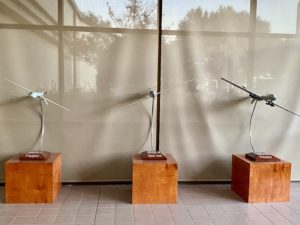
Models of the Predator, Global Hawk and Reaper in the Lobby of the School
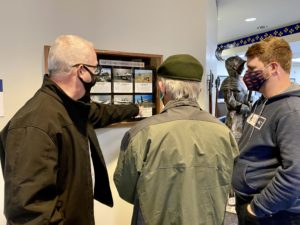
Plenty of examples and imagery in the history hallway
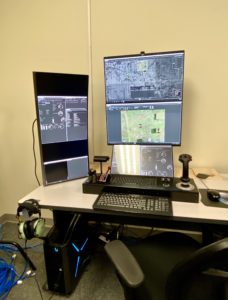
Curved screens on the vertical, laptops, screens, joysticks, headsets – no prob with tech in this environment.
Long before they head to their assignments the officers and airmen who fly these planes learn navigation, principles of flight and and instrumentation at the school with a deep history on the long walls portraying the legends of flight from Billy Mitchell to Jimmy Doolittle and thru to current day heroes.
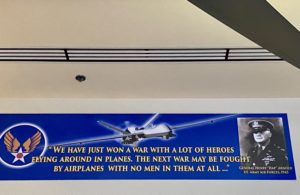 We had permission to take pics and even take a practice flight on a T-6A aircraft training simulator used for teaching basic airmanship skills. The simulator is state of the art using virtual reality technology and missions set up as though taking off from the nearby runway with landmarks like Home Depot or the local high school and interstate down below.
We had permission to take pics and even take a practice flight on a T-6A aircraft training simulator used for teaching basic airmanship skills. The simulator is state of the art using virtual reality technology and missions set up as though taking off from the nearby runway with landmarks like Home Depot or the local high school and interstate down below.
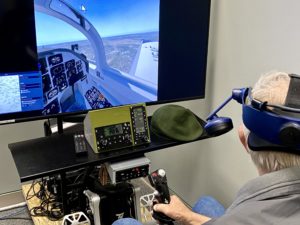
Look right and the screen goes with you.
The school teaches two different tracks for various aircraft. The Air Force requires a college degree or officer status for piloting while enlisted airmen learn the surveillance equipment. Roughly that means an 18 year old can watch and relay info while a 23 year old could press the button to take out a tank or bad actors from around the world.
It’s steeped in history and unit pride and recruiting-level graphics to instill the importance of their missions. To be fair, their mission is significantly safer than manned flight with massive increases in technology.
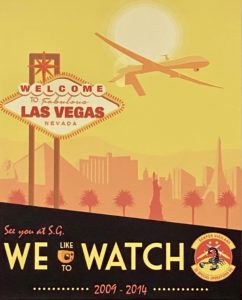
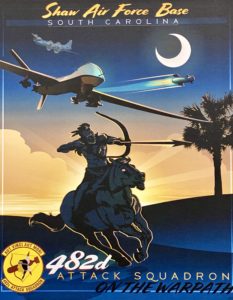
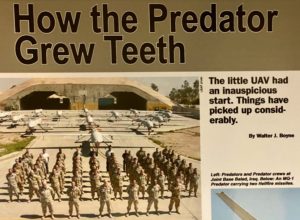
For me though, sitting in that simulator seat just took me back to the very old days. 

